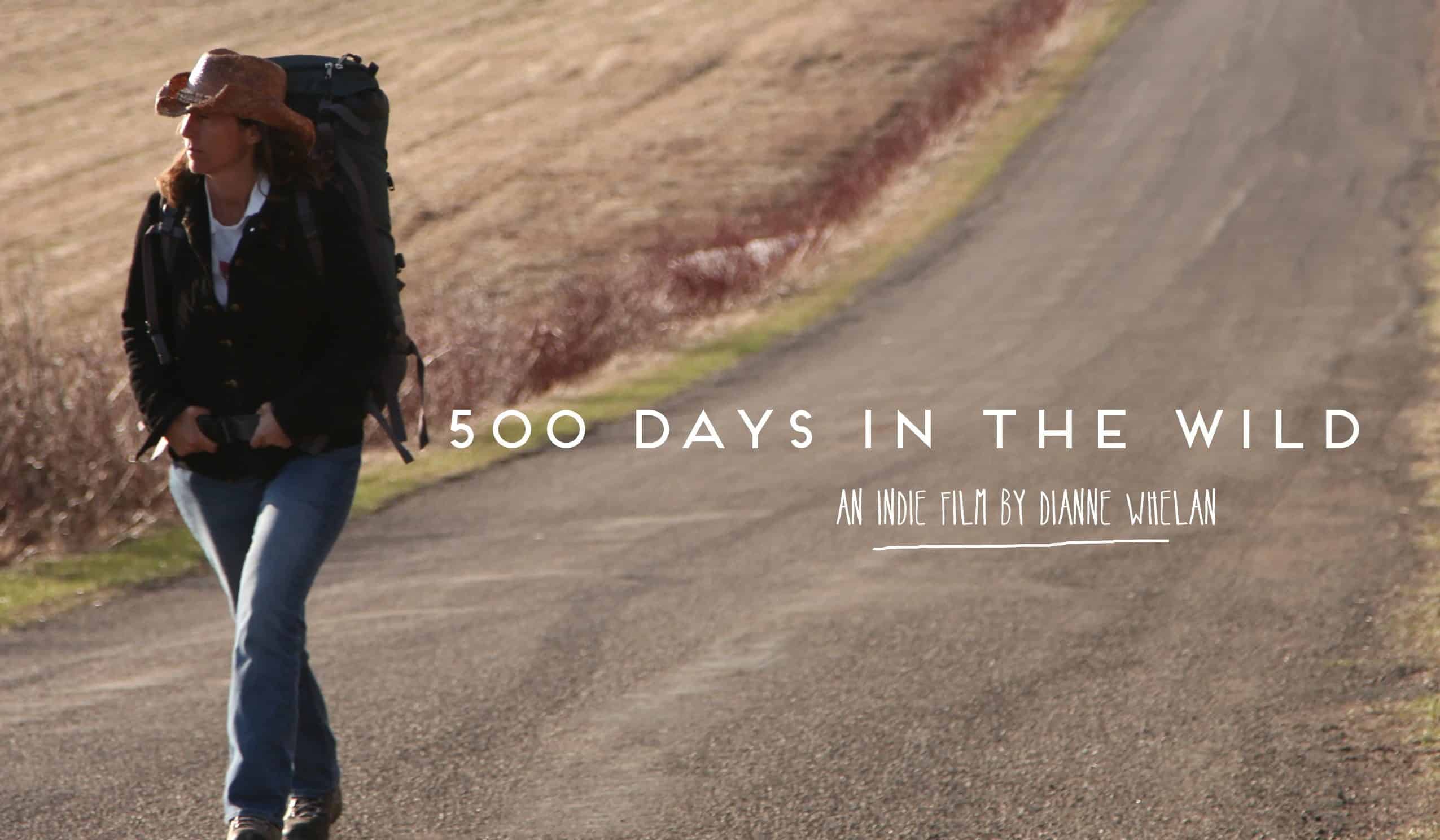
What we carry in our heart shapes our lives – An interview with Dianne Whelan about her new film, 500 Days in the Wild
500 Days in the Wild is a new film that follows filmmaker Dianne Whelan through her six-year (a jaunt longer than the originally anticipated 500 days!) journey to cover the entire 24,000km of the Trans Canada Trail without a motor – by foot, bicycle, canoe, and kayak. Her story is one filled with joy and frustration (mostly at keeping a tent intact), highs and lows. But what really stood out over the 124-minute film is her deep gratitude for the earth, for the people she met, and for the six years she had the opportunity to spend, outdoors.
So when Dianne’s agent reached out to Outdoor Play Canada to see if we would be interested in chatting with Diane about her journey – we emphatically said yes!
Here are some snapshots from that conversation. You can also watch the full interview here!
Louise: How has this journey affected your life since? Relationship with the land? Shift in perspective? Appreciation of the little things like hot showers?
Diane: For sure, 6 years on the Trans Canada Trail changed me. I was feeling the overwhelm, the need for a reset from the news cycle, from my personal life. As I say, I needed to check out to check in. And I needed a new film!
When we’re hurt we armour up. [Once on the trail] it didn’t take long for that armour to fall off and it hasn’t come back on again. That came from trusting again and opening up my heart again. That came from the people I met over those six years. It may have just been a momentary exchange, but it was hard [for that] not to land and change me.
[It made me] realize we don’t live in the story of the world on the news. People need to be aware of the world of course but it is about finding that balance.Some of the most profound changes came from my time in Indigenous communities in Canada. I knew there was going to be a reconciliation journey for me as a person of settler decent on this land.
When I asked Vern, the Haida elder, how I might do that [he gave me a feather that] I carried on my journey, that unknown to me would shape my entire journey. Because I carried this thing with so much reverence.
And what we carry in our heart shapes our lives.
That time I spent listening and learning. Those are the things that shifted me. First, I learned that the old way is not really the fact that you’re canoeing and hiking and using all human power. The old way for the Mi’kmaq people is what you carry in your heart as you travel. These are huge shifts in perception. And once told and learned, was irreversible.
Because I had to deal with managing fear a lot, the way I did that was through some of the lessons I learned in these communities. From the Mi’kmaq people, the old way is to walk by saying ‘the earth is sacred, the earth is sacred’, and by paddling on the water saying ‘the water is sacred, the water is sacred’. That changed my relationship to being on something to – over several years – becoming with something. That is a change in perception that once made is not altered.
It has given me a sense of connection with some humility that I am a small part of a very large web of life.
As my heart opened up from the healing of the kindness of people and from receiving some of these lessons it profoundly changed me.
Louise: Did you consider your journey “outdoor play” in an adult context – or parts of it?
Dianne: Absolutely! As a storyteller, what I love so much about documentary film making is I would do these journeys regardless of whether or not I was a storyteller. I might not have been as committed to finishing that last one if I wasn’t there to make a film, on some days, but I love the outdoors. I love walking, I love hiking, I love canoeing, I love kayaking, I love mountain bike riding. So all the things I was doing, I love. I found joy in them. Not only are they healthy things to do, but that’s the part of this world that I love the most, is the natural world.
You don’t have to be an extreme athlete to go and enjoy these kinds of journeys. What you need to know is what’s your limit, what’s your capacity.
One of the great gifts of being older, is that how hard or fast you do something really becomes irrelevant.
There are lot of people that could do this with a lot more style than I had. But I wasn’t worried about that. I was more worried about the substance of what was happening in my heart.
And the fact is I paddled 8,000km with upside down paddles and half blades in the water, and I never tipped into the water, not once! I navigated some pretty dangerous water, but I also had an immense respect for the water.
I didn’t have a watch and I didn’t have a deadline. And I think that’s also why I could navigate this experience safely. Because I could always respect nature.
It’s all play for me. I never wanted to quit. The hardest part was coming home. Because I knew now that I didn’t get to be outdoors every day. That was the best part of those six years, I was outdoors every day. That’s where I love to be. It was the greatest gift I could have given myself, to do this journey.
Louise: What’s next for you?
Dianne: I shot 800 hours out there, and I would like to make an eight-part series of this journey. I have started writing a book about the journey as well. Creatively that’s what is before me for the next year and a bit. But I do have another long journey that I want to go out and do, so there is something else coming down the line.
Watch the trailer for 500 Days in the Wild, here!
500 Days in the Wild is streaming now on Paramount+

